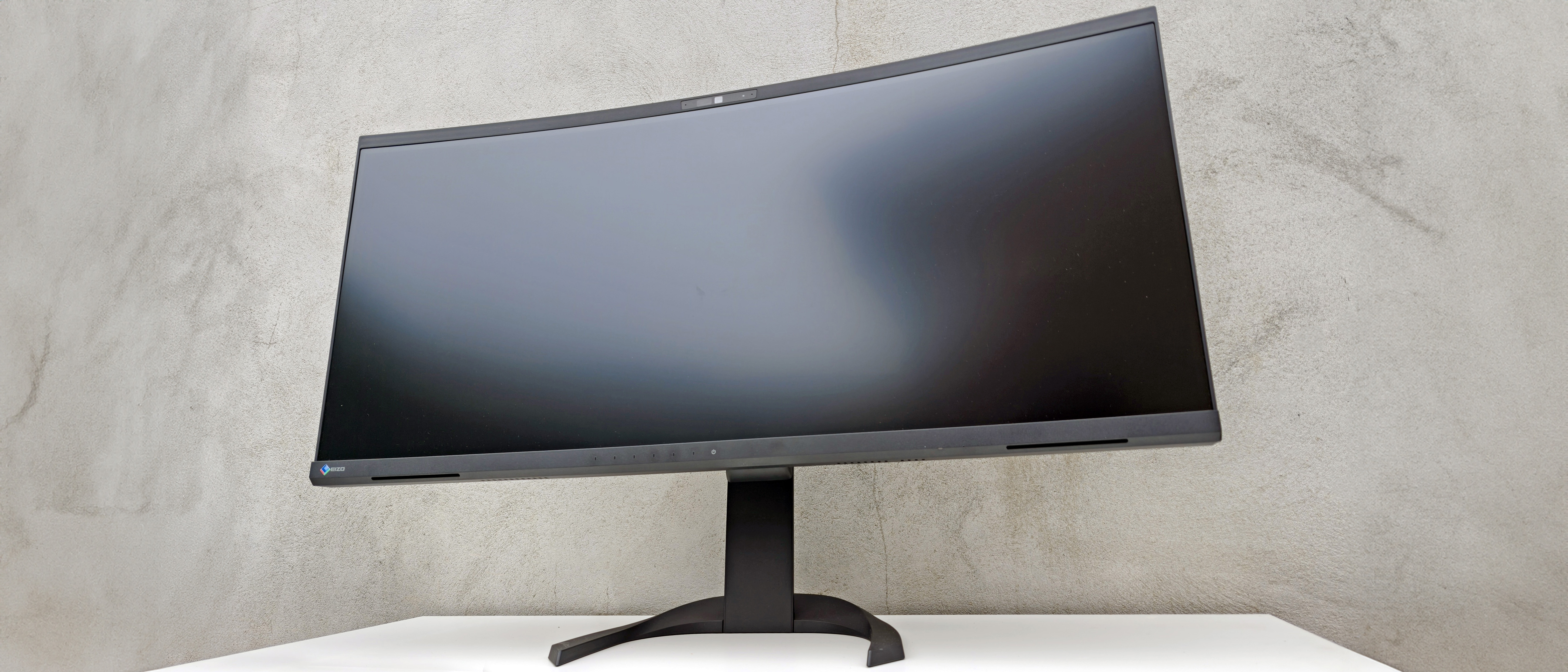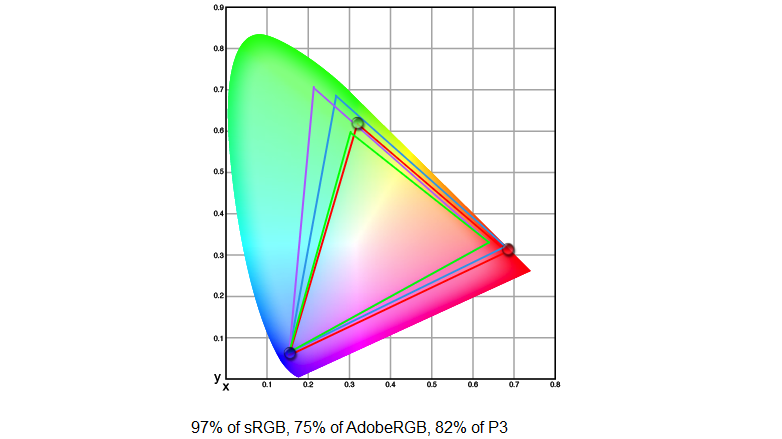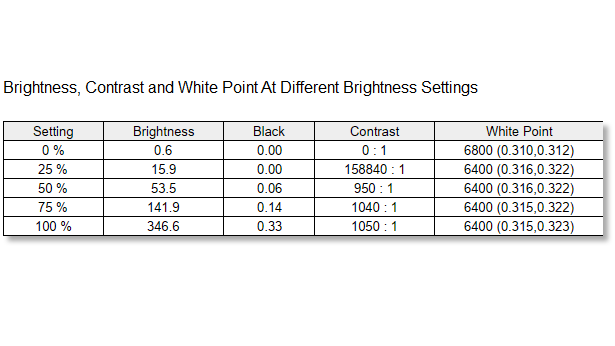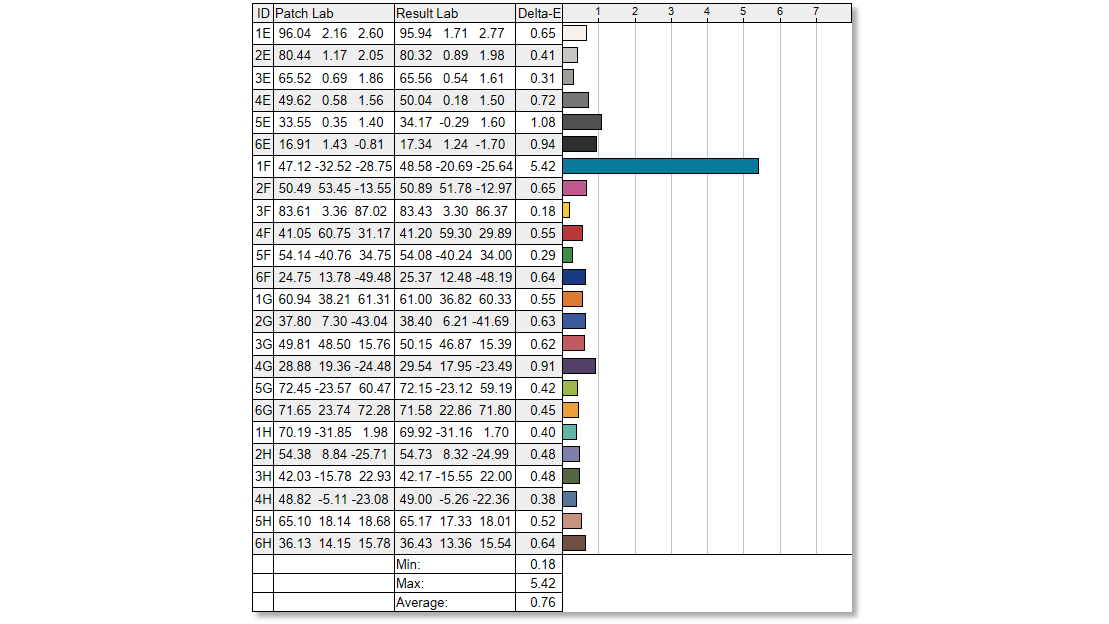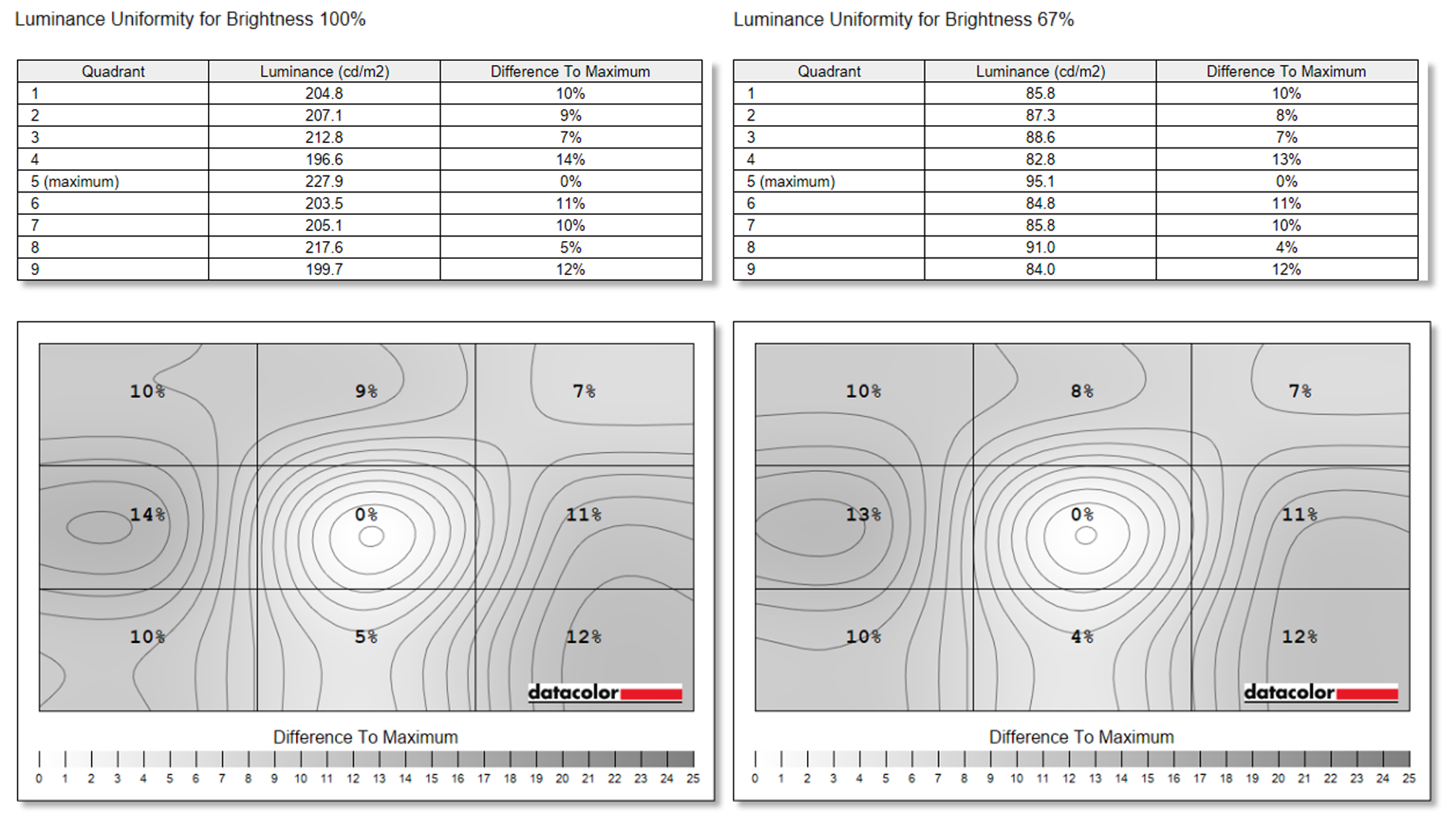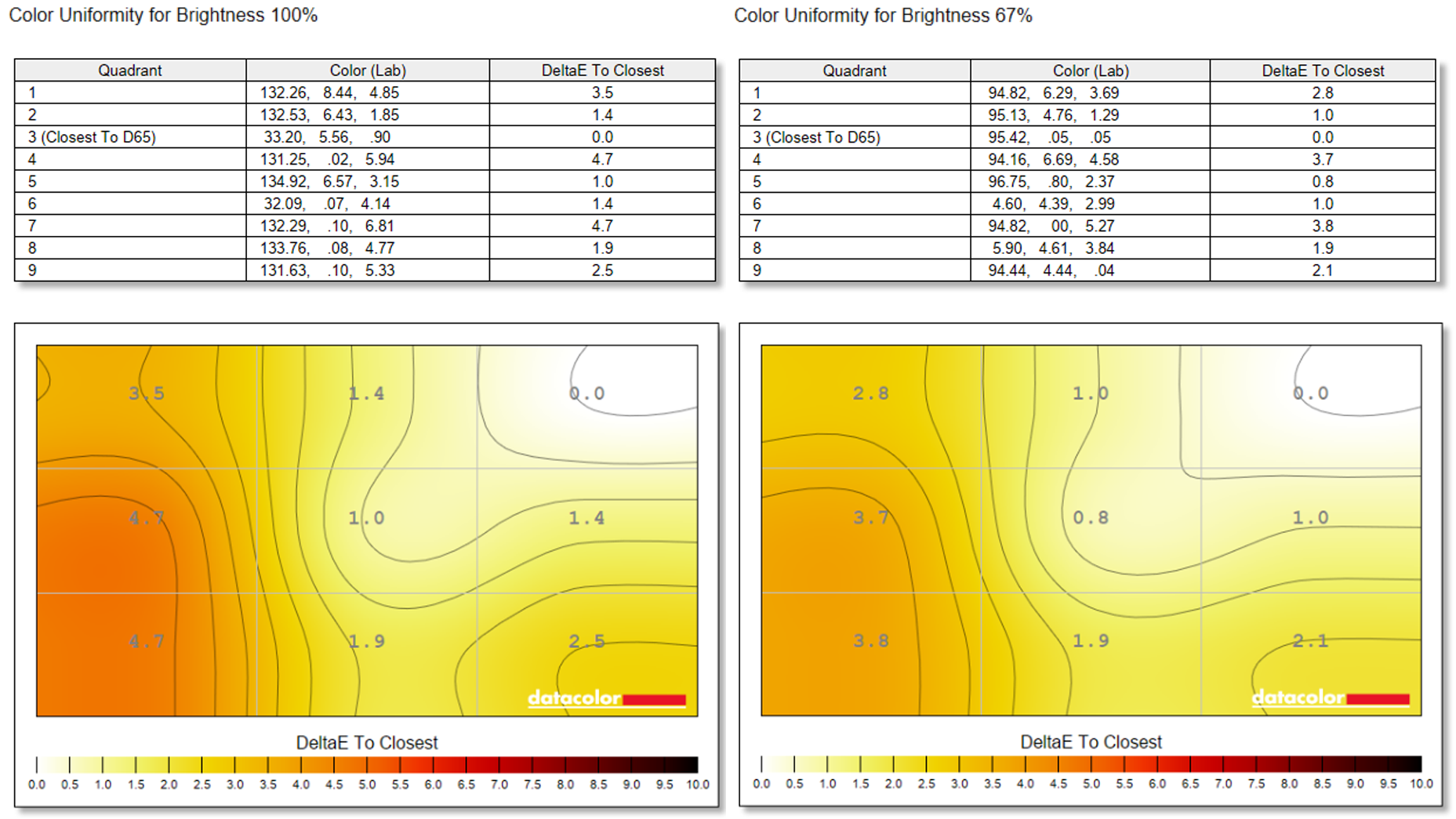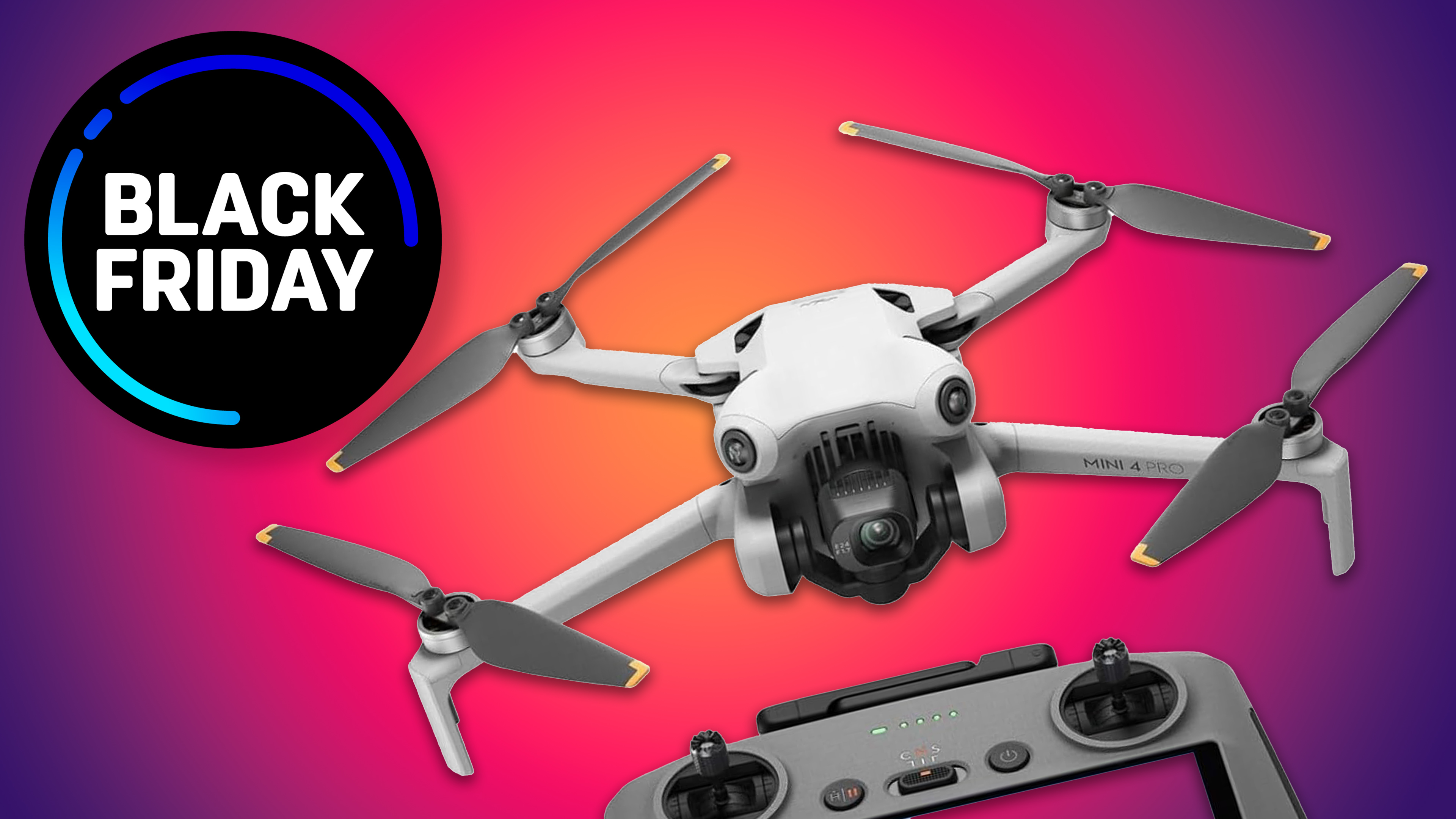Digital Camera World Verdict
The Eizo EV3450XC is a rare beast: a curved ultrawide monitors that uses an IPS LCD panel. Consequently it offer noticeably better image quality than typical curved displays, but only if you edit in sRGB. Coverage of wider color gamuts is poor, making the display tough to recommend to more demanding editors. Its included webcam and mic are a bonus though, as is USB-C connectivity with Power Delivery. If you simply must have a curved monitor for image or video editing, the Eizo EV3450XC is well worth considering. But otherwise you can get significantly better screen specs for similar money by going for a flat display.
Pros
- +
A rare curved IPS screen
- +
Excellent color accuracy
- +
Built-in webcam & mic
- +
Solid build
Cons
- -
Restricted color space coverage
- -
Uniformity could be better
- -
Webcam not great
- -
Relatively pricey
Why you can trust Digital Camera World
Ultrawide monitors are great if you want extra horizontal room to display two windows side by side, or simply a more immersive viewing experience. The latter is improved still further if the screen is also curved, so that ultrawide perspective actually wraps around you. This is exactly what you get from Eizo's FlexScan EV3450XC, along with extras like a built-in webcam and microphone, plus USB-C connectivity with Power Delivery.
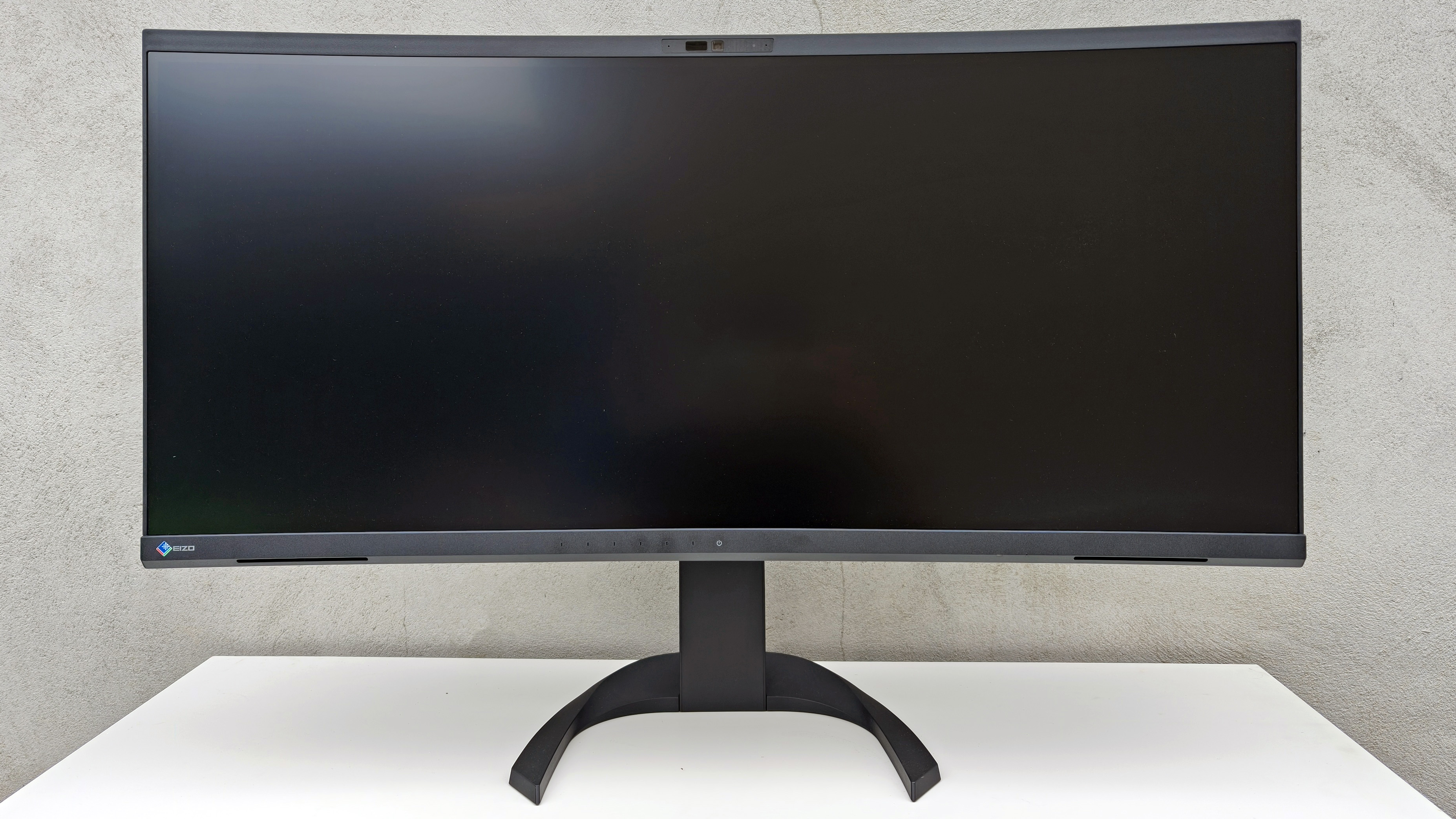
Specifications
Display area: 34 inches
Aspect: 21:9
Panel type: IPS
Panel bit depth: 8-bit
Display colors: 16.77 million
Resolution: 3440 x 1440
Pixel density: 109 ppi
Refresh rate: 60Hz
Response time: 5ms
Brightness: 300 cd/m2
Contrast ratio: 1000:1
Color space coverage: Not stated
Video inputs: HDMI x2, USB-C (DP Alt Mode), DisplayPort
Read more:
The best curved monitors
The best ultrawide monitors
The best monitor calibrators
Key features
There's no shortage of 34-inch curved ultrawide monitors, but the vast majority tend to be based around VA LCD panels. The EV3450XC is unusual in this sector as it utilizes an IPS LCD panel. IPS screens offer wider viewing angles and better brightness and color consistency than VA-based monitors. This is especially important on a large display like this, where your viewing angle to the extreme edges of the screen is significantly different to the optimal, dead-ahead angle at which you view the center of the display. It's also vital for accurate image or video editing, where you don't want color or contrast to appear different at the edges of the screen relative to the middle.
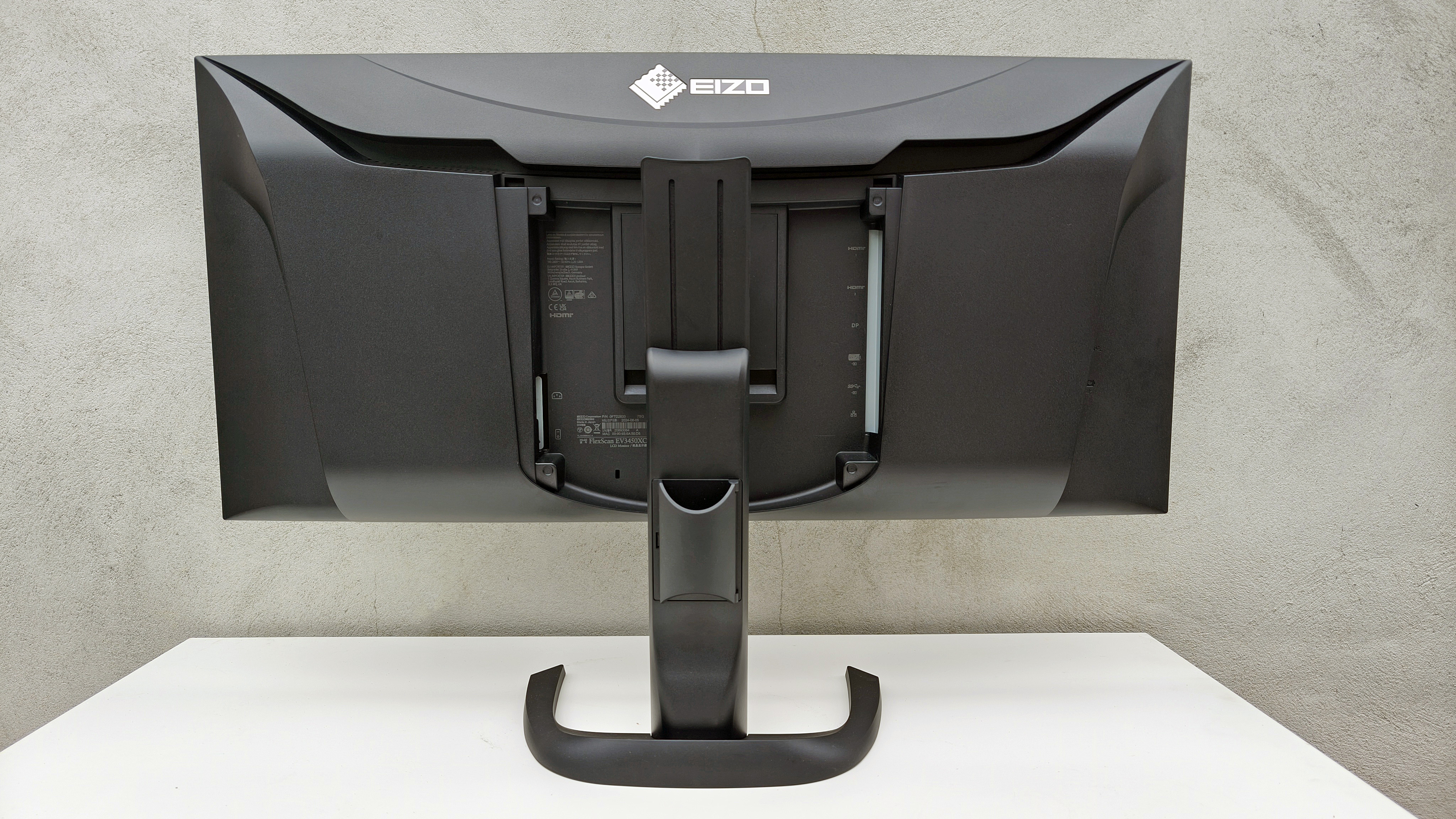
However, despite the premium LCD underpinnings, Eizo doesn't advertise the EV3450XC's color space coverage, instead simply stating that it has "wide gamut coverage" of the sRGB color space. This is due to the screen only supporting 8-bit color (16.77-million hues). Coverage of the more demanding Adobe RGB or DCI-P3 color spaces require a wide-gamut, 10-bit panel capable of displaying 1.07 billion colors.
Build & handling
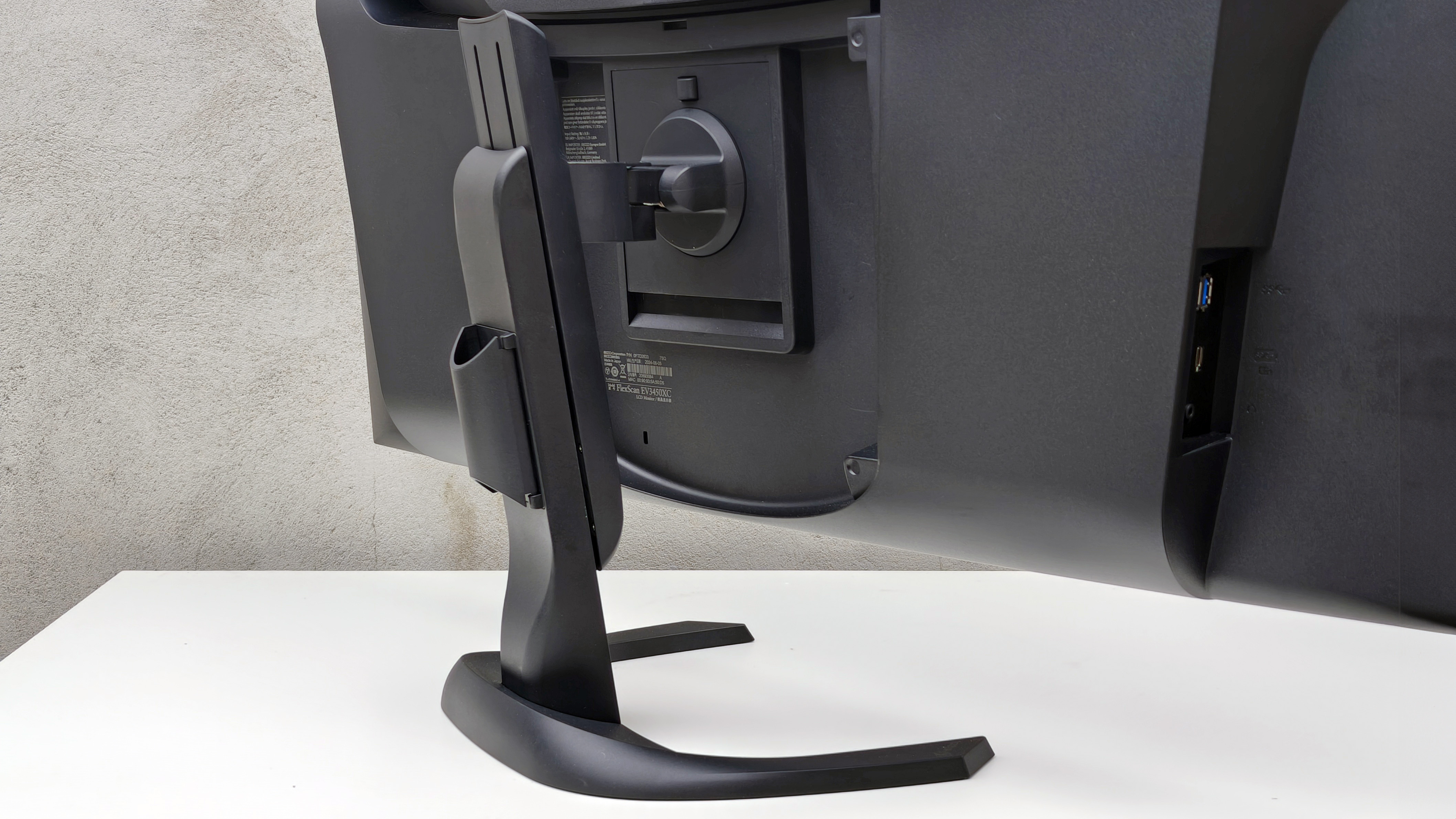
The EV3450XC is typical Eizo: simple, well made, with an emphasis on substance over style. Eizo monitors are made to be long-lasting functional devices for discerning professionals, not fashion-focussed designer products that sacrifice performance for good looks. Some may find the EV3450XC's matte black plastic casing dull, but it does the job, and the large horseshoe-shaped stand provides a solid, stable base. This has plenty of tilt, swivel and height adjustment, so you shouldn't have any problem finding a comfortable viewing angle.
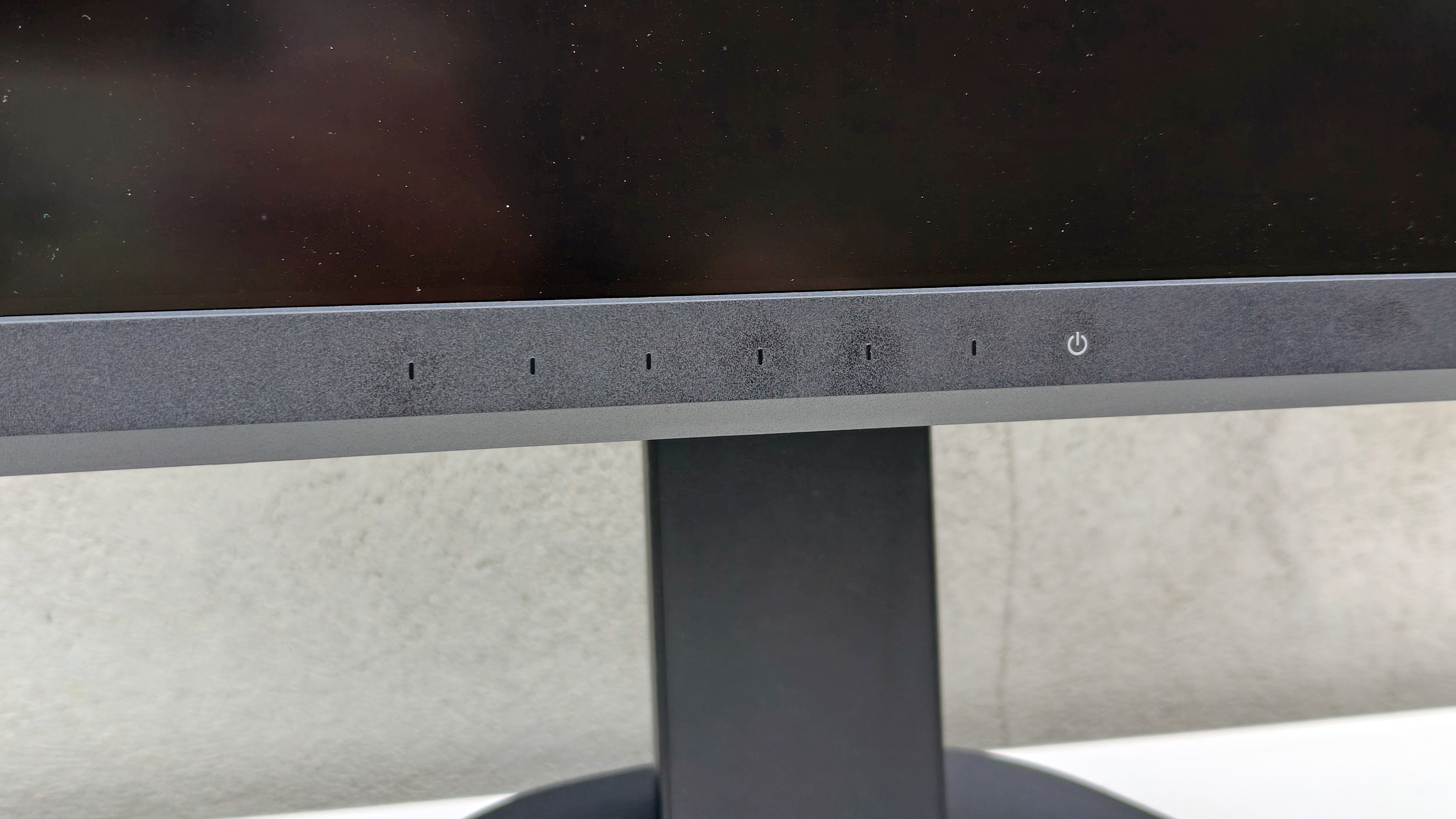
A row of touch-sensitive controls lets you navigate the monitor's menus and settings - they're very responsive and easier to access than conventional buttons that tend to be hidden on the base or rear of many monitors. If we're to nit-pick, the bezels appear to be very slim at the edges, but when the display lights up the actual viewable screen area is around a quarter-inch smaller on the left, right and top edges than the bezels would have you believe.
The best camera deals, reviews, product advice, and unmissable photography news, direct to your inbox!

Though the top bezel is quite thick, it does house the monitor's built-in webcam and microphones. These are often tacked-on modules that sit atop the screen, but Eizo has neatly integrated a webcam into the EV3450XC. If you connect the monitor to your PC via USB-C, that single cable can carry the camera feed as well as the monitor signal. Use the conventional video inputs (HDMI, DisplayPort), and you'll need to run a separate USB cable (included with the monitor) between monitor and computer for the camera to function.

Performance
VA-based curved ultrawide monitors can appear overly vivid and contrasty - great for eye-catching gaming and movie watching, but less beneficial for color-accurate editing. The EV3450XC exhibits more restrained contrast and color saturation that's typical of IPS displays, which is better for accurate editing, and causes less eye strain than overly-saturated screens. Color is subjectively consistent across the whole screen, and I found setting the brightness to around 70% was ideal for comfortable viewing.
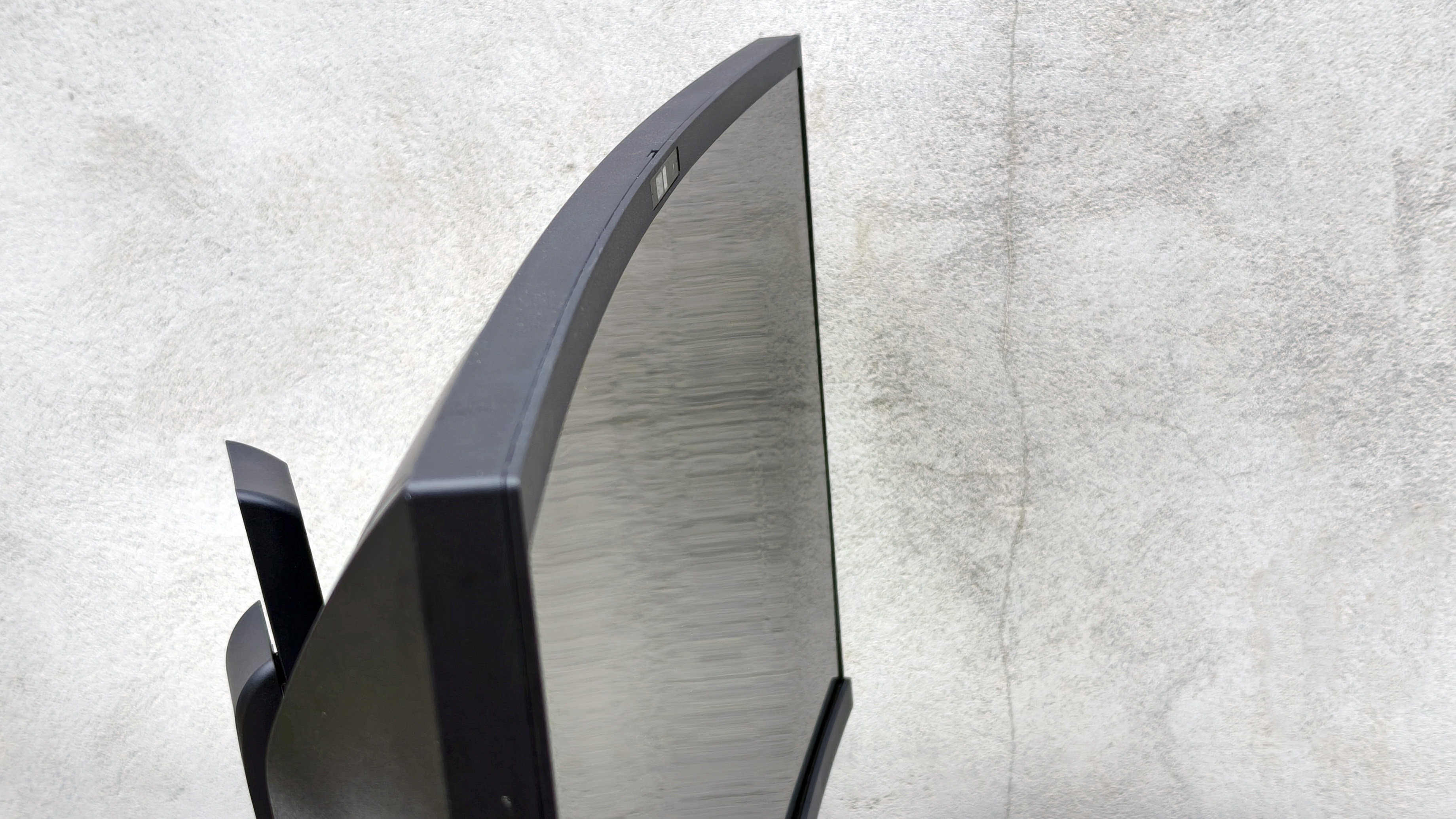
The exact curvature radius of the display is 3800R, meaning you'd have to place the screen 3800mm (3.8 meters) away from you for the center of the display to be the same distance away from you as the left and right edges. That's a very subtle curvature in the world of curved monitors, but I'd prefer this than a tighter radius when it comes to image editing. While a tighter radius works well for immersive, wrap-around gaming, it causes horizontal lines in images to look obviously bent, making it difficult to accurately manipulate images containing geometric subjects. Even the minimal curvature of the EV3450XC still causes horizontal lines to appear slightly distorted, but the effect is subtle enough that I got accustomed to it quite easily.
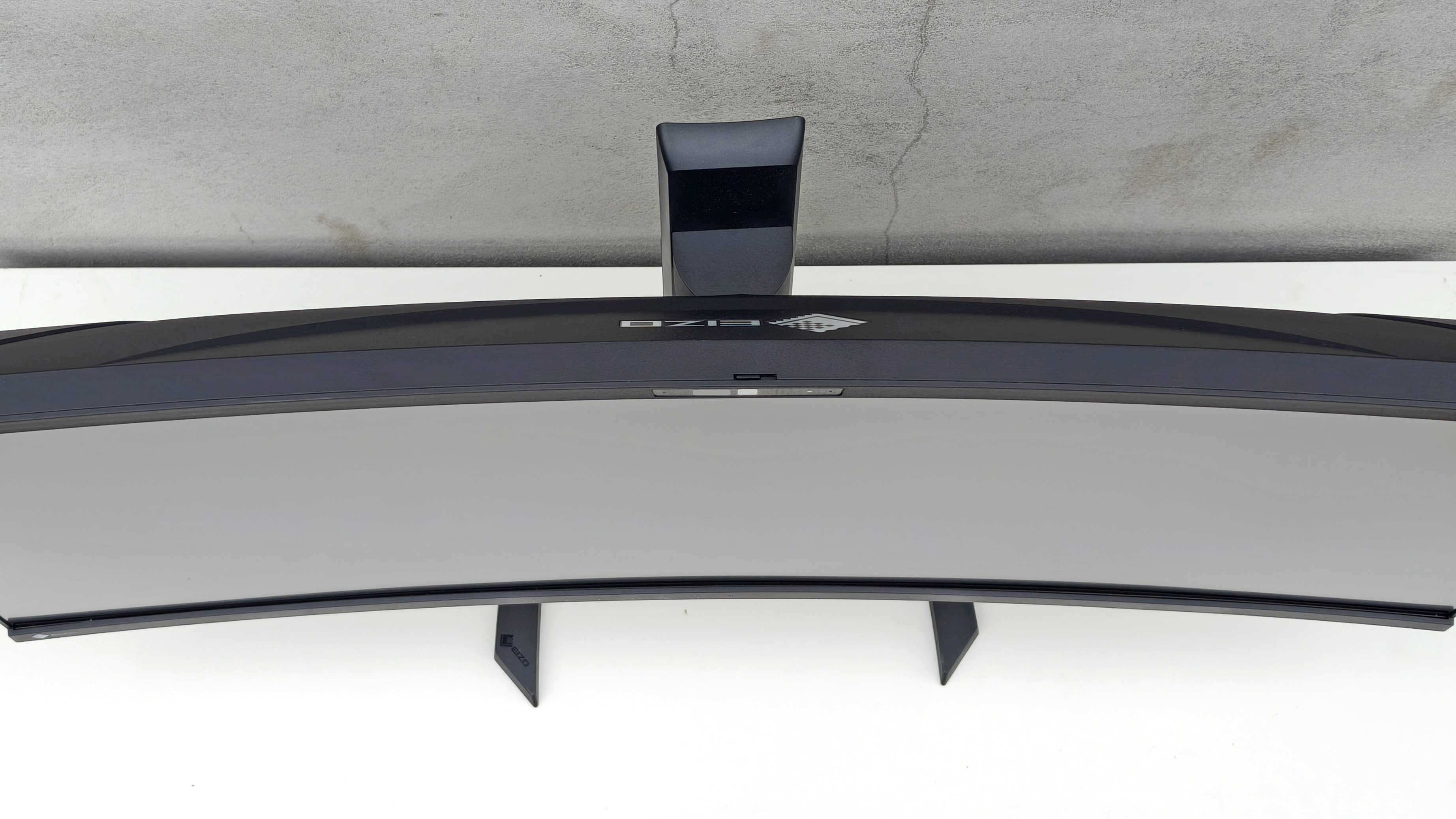
With its 3440x1440 resolution, the EV3450XC's pixel density is perfect for displaying apps at their native 100% size with no upscaling required for them to be comfortably viewable. Interface fonts are therefore always crisp, no matter the age of the app you're using, which could otherwise cause it to have issues upscaling text and icons on a monitor with a higher pixel density. The 21:9 ultrawide aspect ratio is ideal for displaying two windows side by side, as well as allowing you to display additional editing pallets beside a 4:3 or 3:2 image, or even a 16:9 video. Think of the EV3450XC as a 27-inch 1440p monitor, just with extra screen real estate added to each side - the vertical height and pixel density is virtually identical. This does however mean that when playing regular 16:9 video, it won't be any larger than when played on a 27-inch, 16:9 monitor.
I also tested the EV3450XC's built-in webcam - a key feature of the monitor. Its video quality is fairly average though; quite grainy, and lacking fine detail. In low light color accuracy and saturation also take a noticeable hit. The camera does expose well though, even if you're heavily back-lit.
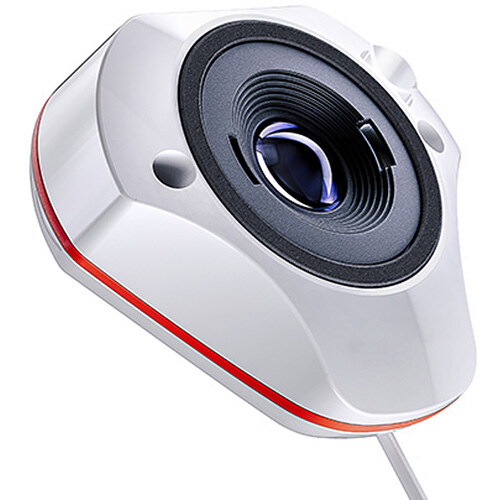
While the EV3450XC's image quality looks great to the naked eye, to get a truly objective perspective you need to measure the screen's output with a colorimeter - otherwise known as a monitor calibrator. A device such as DataColor's Spyder Pro can not only calibrate a monitor's color, it can also measure its out-of-the-box color accuracy, brightness, color space coverage and brightness uniformity:
Lab results
Color gamut:
Eizo doesn't advertise the EV3450XC's exact coverage of major color gamuts, but I measured 97% sRGB, 82% DCI-P3 and 75% Adobe RGB coverage. The sRGB figure is good, but plenty of budget monitors can match it. The Adobe RGB and P3 scores are downright poor, but these numbers are to be expected from an 8-bit display.
Brightness and contrast:
Eizo claims 300cd/m2 maximum brightness and 1000:1 peak contrast ratio. I measured 346.6cd/m2 and 1050:1 contrast - no issues here.
Color accuracy:
The EV3450XC isn't marketed as a color-critical editing display, and consequently the specs don't include any Delta-E color accuracy figures. For reference, monitors with an emphasis on color accuracy usually claim to be accurate to within a Delta-E of 2 (the smaller the number, the closer to perfect color). I measured the EV3450XC to have a deviation from optimal color accuracy of just 0.76 - a highly impressive figure. It is however worth noting that prominent blue/cyan bar in the chart above. Many manufacturers tune their monitors to have a slightly blue shift to make white tones appear cooler and crisper, but naturally this comes at the expense of true color accuracy.
Luminance uniformity:
Screen brightness (luminance) uniformity is fairly good, being up to 14% dimmer at the edges of screen compared to the center. This difference isn't obvious to the naked eye, but I've measured flat Eizo screens with significantly more consistent brightness uniformity than this.
Color uniformity:
As with brightness uniformity, the EV3450XC's color is reasonably consistent across the screen, but again it could be better.
Verdict
The Eizo EV3450XC is a bit of an oddity. On the one hand it doesn't really do anything wrong, but on the other it's difficult to work out who should actually buy it. Eizo markets the EV3450XC as a display for business and video conferencing, and sure, with its webcam, mic, built-in speakers, USB-C docking and LAN features, the EV3450XC would work well in an office environment. However, office apps and web conferencing don't require color-critical image quality, and there are other VA-based curved ultrawide 34-inch monitors with webcams that'll fulfil the same role, but for around half the price of the EV3450XC.
It's also hard to recommend the EV3450XC for image or video editing. Curved screens in general are not really advantageous for these workflows, likely explaining why Eizo isn't explicitly promoting the EV3450XC for editing. Keen editors will also find the monitor's restricted color space coverage tough to justify at this relatively high price point. And there's not a lot here for gamers either, who will snub the EV3450XC's 60Hz refresh rate and lack of G-Sync/FreeSync support.
That said, I always prefer an IPS display over a VA-based monitor for accurate image or video editing, and the EV3450XC is one of only a handful of IPS curved ultrawide monitors. Its out-of-the-box color accuracy is also excellent, and there are no obvious shortcomings with the screen's uniformity, brightness or contrast.
If your monitor absolutely must be curved, and you only edit images in sRGB, then the EV3450XC won't disappoint. But if you can do without the curve, a flat, wide-gamut display makes much more sense for serious image editing.
Ben is the Imaging Labs manager, responsible for all the testing on Digital Camera World and across the entire photography portfolio at Future. Whether he's in the lab testing the sharpness of new lenses, the resolution of the latest image sensors, the zoom range of monster bridge cameras or even the latest camera phones, Ben is our go-to guy for technical insight. He's also the team's man-at-arms when it comes to camera bags, filters, memory cards, and all manner of camera accessories – his lab is a bit like the Batcave of photography! With years of experience trialling and testing kit, he's a human encyclopedia of benchmarks when it comes to recommending the best buys.
You must confirm your public display name before commenting
Please logout and then login again, you will then be prompted to enter your display name.
